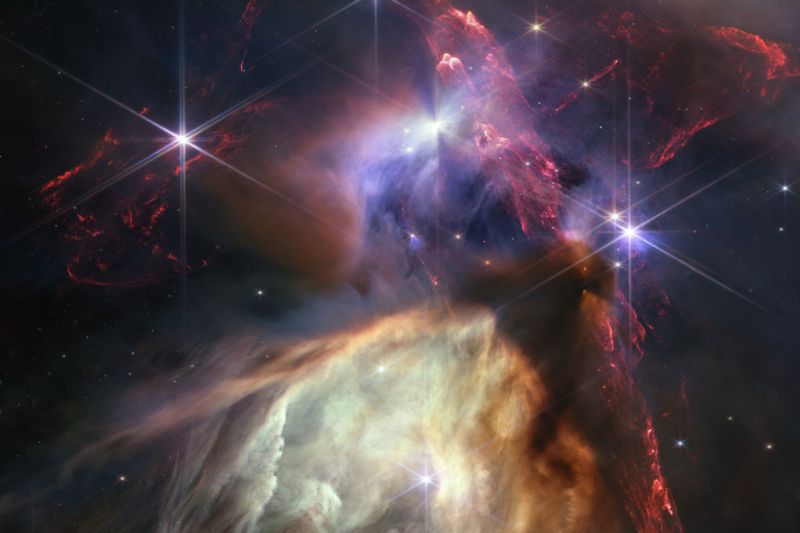In the world of music, the creation and first performance of a new oratorio is no small event. Even more so when the oratorio, by the Melbourne composer Nicholas Buc, deals with nothing less than Origins of the Universe, of Life, of Species, of Humanity. Its text was written by a geneticist and a poet working together, Jenny Graves and Leigh Hay.

Its composition was initiated by the Heidelberg Choral Society, under the direction of Peter Bandy, performed it at the Melbourne Recital Centre on 18 July 2023, as part of the XXIII International Congress of Genetics, being held in Melbourne. The entire oratorio was presented with an accompanying video animation by Drew Berry, a biomedical animator at the Walter and Eliza Hall Institute. Whereas Joseph Haydn composed his oratorio, The Creation, using a text drawn in part from Genesis, the Psalms, and Milton’s Paradise Lost, Buc’s Origins offers an account of the story of the universe in terms of contemporary physics and genetics, without traditional religious language about God intervening in the universe. Its story begins with nothing less than how nothing becomes something, what the opening tenor solo describes as magnum mysterium, a Latin phrase that evokes the sacred mystery of creation: ‘Somewhere, something incredible is waiting to be known.’
Origins, richly orchestrated by a composer with a gift for cinematic narrative, is immensely exciting to sing. While it avoids talking about God (whose name in Jewish tradition has always been too sacred to be named in speech), the libretto evokes the language of sacred wonder at how in an instant ‘bursts time, matter, energy, a sea of light and radiation flooding … Beauty and power of simplicity. The beautiful, miraculous appear from nowhere.’ We move from the creation of the universe to the ‘rocky horror’ of the Hadean era, when gravity battled with vast cosmic energies to create one minor planet ‘in a humdrum galaxy’ that we call earth and became a pale blue dot – an image made famous by the appearance of earth to astronaut Neil Armstrong (although one could add that it is also an ancient image in Hindu meditation).
'We have to recognize that songlines are never static. From time to time, they need to be updated, just like the story of creation. There is never just a single songline to help us on our journey.'
We follow the story into the origins of life not just in Pilbara’s ancient rocks, but through the lens of the discovery of DNA as a double helix by Jim Watson and Francis Crick. They drew on key insights from Rosalind Franklin (1920-58) , a pioneering biochemist, who would die before Watson and Crick were officially beatified by the Nobel Prize committee as having discovered the core genetic mechanism for transmitting life. Buc uses a wide range of musical styles to present both the drama of discovery and the absurd controversy new ideas have often provoked, as happened with ‘Mr Darwin’s dangerous ideas,’ generating suspicion not unlike that provoked by climate science in our own day. The gift of the poetry of Graves and Hay is that it explains to non-scientists not just how DNA was discovered, but how it provides the foundation from which different species have evolved. There always has been a struggle for existence in the generation of multiple species, at the same time as a struggle for order simply to survive.
For me, the most moving part of Origins is that concerned with extinction, a line of thought that had not been raised when Haydn celebrated creation: ‘Most life that ever lived is gone. Fossils and ghosts all that remain.’ A chiming bell calls us to remember this profound passing, all the more real as we move from the Holocene to what is now called the Anthropocene: ‘Extinction is a part of evolution, but the sixth extinction is upon us – that is all our own.’ As in all great stories, there is a moment of choice for us as humanity. What Augustine called original sin is present for modern humanity as a tendency to dominate, once a survival mechanism, but now threatening our very future as a species. The oratorio concludes by reflecting on our potential for understanding through wonder and awe, ‘that we are made of stardust,’ and so our capacity to glimpse our place in the universe.

It would be too simplistic to describe this oratorio simply as a secular scientific composition that rejects religious ways of looking at the world. By reminding us of what Aristotle recognized as the foundation for all inquiry, namely wonder and awe, it opens up a way of what David Suzuki called the sacred balance, a vision that many different religious traditions have sought to teach, although sometimes without sufficient attention to the complexity of the web of life. One way of considering this oratorio is to see it as a new kind of songline, cultural DNA as it were, telling the story of creation in a way that draws on the language of contemporary science.
In Australia, the first peoples of this land have survived for many thousands of years by telling sacred stories about the creation of their particular land and its potential sources of water, shaping identity and cosmology. Scriptural narratives deserve to be treasured as another form of songline, telling the journey of spirit ancestors in order to provide a map for the present. Our world has moved on from Haydn’s time. We have realized that there are many more songlines that we can learn, as we discover more about the particular patch of the universe in which we live. We may not understand all the different languages in which songlines may be passed on. Yet we can still benefit from their beauty and multiplicity, refusing the tyranny of reductionism, whether scientific or religious.
In a profound way, we are being asked to modify our constitution in order to recognize the first peoples of our land. That document is another form of songline, telling us who were are and who we might be. Its scope is necessarily limited in character. But we have to recognize that songlines are never static. From time to time, they need to be updated, just like the story of creation. There is never just a single songline to help us on our journey.
Constant J. Mews is Professor Emeritus at Monash University, attached to the School of Philosophical, Historical and International Studies. He sings in the Heidelberg Choral Society.
Main image: NASA's James Webb Space Telescope reveals the Rho Ophiuchi cloud complex, the closest star-forming region to Earth on July 12, 2023. (NASA, ESA, CSA, and STScI via Getty Images)